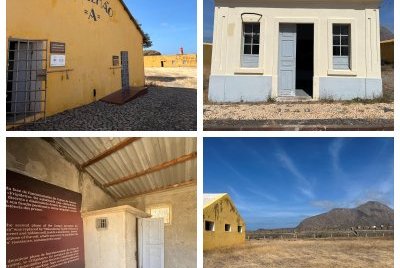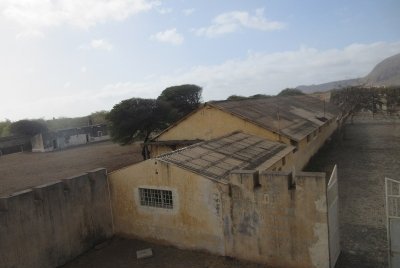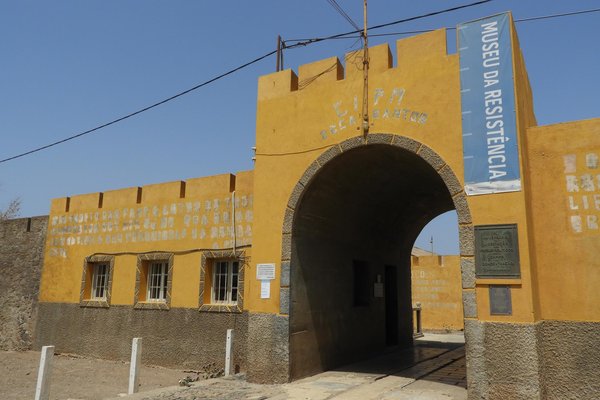Cabo Verde
Tarrafal Concentration Camp
The Tarrafal concentration camp bears testimony to the obscure past of the fascist regime of the Portuguese dictator Salazar.
Between 1936 and 1974, left-wing and anti-colonial political prisoners were sent and held here on Santiago Island. They included both Portuguese and Angolans, Guineans and Cape Verdeans. At least 37 of them died from the harsh conditions in the camp.
Site Info
Official Information
- Full Name
- Tarrafal Concentration Camp (ID: 6102)
- Country
- Cabo Verde
- Status
-
Nominated 2028
Site history
History of Tarrafal Concentration Camp
- 2024: Preliminary Assessment
- 2016: Revision
- Renomination of TWHS dating from 2004
- 2016: Added to Tentative List
- Added to tentative list
- Type
- Cultural
- Criteria
- iii
- vi
Links
- UNESCO
- whc.unesco.org
All Links
UNESCO.org
- whc.unesco.org — whc.unesco.org
News Article
- July 12, 2018 allafrica.com — Angola Backs Cabo Verde in Bid for Tarrafal As World Heritage Site
Community Information
- Community Category
- Secular structure: Memorials and Monuments
Travel Information
Recent Connections
News
- allafrica.com 07/12/2018
- Angola Backs Cabo Verde in Bid for…
Community Reviews
Show full reviews
Like Cidade Velha WHS, the Tarrafal Concentration Camp lies on the main island of Cabo Verde: Santiago. It can be reached by public minibus (aluguer) from the capital Praia; they leave when full from a street near the Estado da Varzea. The 1.5h drive (600escudos) is quite pretty, as it crosses a landscape full of volcanic peaks and the Serra Malagueta Natural Park. The former Concentration Camp lies next to the main road, 2km before the town entrance of Tarrafal.
The Tarrafal Concentration Camp has been on the road to nomination for a long time. In recent years the initiative has picked up speed again, but at the moment of writing it is unknown whether they have submitted a dossier in time for the 2026 WHC. The latest news item from April 2024 underlines the government's commitment and mentions that support has been sought from Angola, Guinea-Bissau and Portugal (the three other countries that had political prisoners incarcerated here) to create a transnational candidacy. That support will be moral and financial I guess, I don’t think additional components in those countries will be added.
The site itself, which requires a modest 200 escudos (1,90 EUR) entrance fee, has been ready for an international audience already for a couple of years. It was on the World Monuments Watch of 2006, turned into a museum in 2009 and fully restored with Portuguese help in 2021. It now looks much better preserved than in earlier photos …
Keep reading 0 comments
From the perspective of Praia, the capital of Cape Verde, the town of Tarrafal is located exactly on the opposite side of the island of Santiago. Although the distance is only 60 kilometers, it can take as long as 1.5h by car and even up to 3h by minibus, called here aluguer. We chose the latter, adding to the adventure. You have to ask the driver to stop near the camp, which is in the outskirts of the town of Tarrafal, near the main road.
The Camp was founded in 1936 in the times of the exemplary Catholic, dictator of the Portuguese empire Antonio de Olivieira Salazar and functioned (with a 7-year break) until April 25, 1974, the memorable day of the Portuguese Carnation Revolution. The location was not accidental, because at that time Tarrafal was the real end of the world - the islands were completely isolated, but at the same time they were almost in the middle of the empire, at the junction of sea routes. The nearest neighborhood was rarely settled, and most importantly, the water sources were extremely scarce and easy to control. Therefore, escape was very difficult, hence there were no such cases in the history of the camp. Tarrafal was a place of isolation of the opponents of the regime from all over the empire - except for the Portuguese, independence activists from Angola, Mozambique, Guinea-Bissau and Cabo Verde itself were also imprisoned here. In the camp, basically, everything was designed to make …
Keep reading 0 comments
